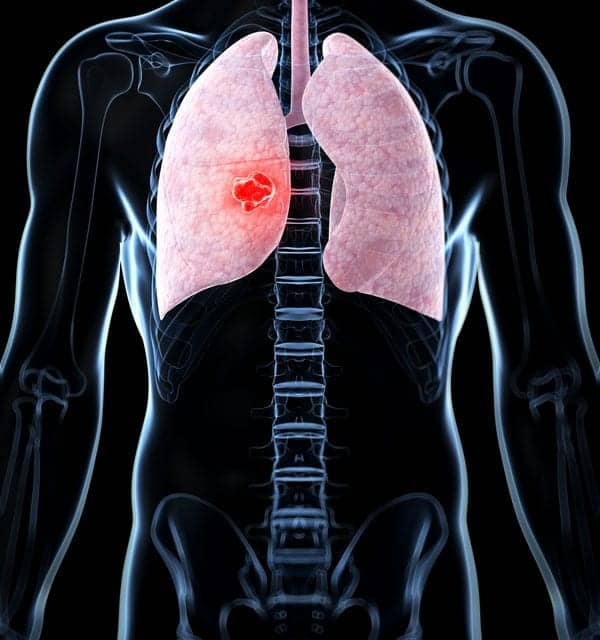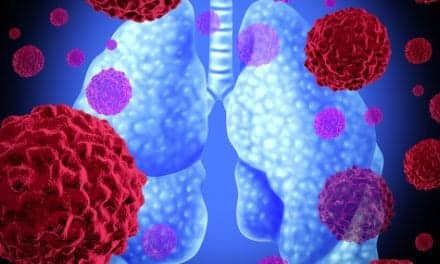An analysis of a trial with locally advanced non-small cell lung cancer (NSCLC) patients shows that those administered intensity modulated radiation therapy (IMRT) had positive health benefits when compared to patients who received 3-dimensional conformal radiation therapy (3D-CRT). The patients specifically had less severe lung toxicity and were better able to tolerate chemotherapy. A news release from MD Anderson Cancer Center notes that IMRT is a newer technique that sculpts and molds radiation beams to tumor targets, which can spare more normal tissue than 3D-CRT.
The study conducted was a secondary analysis of data collected from the NRG/RTOG 0617, a large multi-center phase III randomized trial of patients with locally advanced NSCLC. The study enrolled patients who underwent concurrent chemotherapy and either 3-D CRT or IMRT. In the study, 482 patients were treated with radiation; specifically, 53% with IMRT and 47% with 3-D CRT. The study found that 44% fewer cases of severe pneumonitis in patients who received IMRT (3.5% of patients compared to 7.9% of the 3D-CRT group).
According to Stephen Chun, MD, the lead author of the study, while the benefit of IMRT was seen in all tumor sizes, the reduction of severe pneumonitis was more pronounced in larger tumors. In addition, the patients who received IMRT were more likely to complete consolidative chemotherapy, precisely 37% compared 29% in those treated with 3D-CRT.
Chun explains that one of the principles of IMRT is to bring in many complex beams to converge on a target, producing a high dose on the target. By using multiple beam arrangements, this leads to spreading of a low-dose bath such as the volume of lung that received 5 Gy of radiation, as indicated on the MD Anderson Cancer Center news release.
Though IMRT is a more time-intensive and costly technique, the study showed a significant reduction in severe toxicities. The findings have the potential to reduce the number of hospital admissions and improve quality of life for this patient population, Chun explains.
“It’s been unclear what the consequences of that low dose bath are. What we’ve seen in this study is that indicators of the low dose bath that’s increased by IMRT had no association with any severe toxicity outcome,” Chun says. “This finding suggests that we should be optimizing radiation treatment by the high and intermediate dose region, and not the low dose region.”
Source: MD Anderson Cancer Center










Hi,
First off, I came across your site and wanted to say thanks for providing a great cancer resource to the community.
I thought you might find this useful infographic interesting, as it shows the detailed effects of chemotherapy in an interactive format: http://www.healthline.com/health/cancer/effects-on-body
Naturally, I’d be delighted if you share this embeddable graphic on https://respiratory-therapy.com/2015/10/imrt-linked-better-tolerance-chemotherapy-lung-cancer-patients/ , and/or share it on social. Either way, keep up the great work !
All the best,
Maegan
Maegan Jones | Content Coordinator
Healthline
Your most trusted ally in pursuit of health and well-being